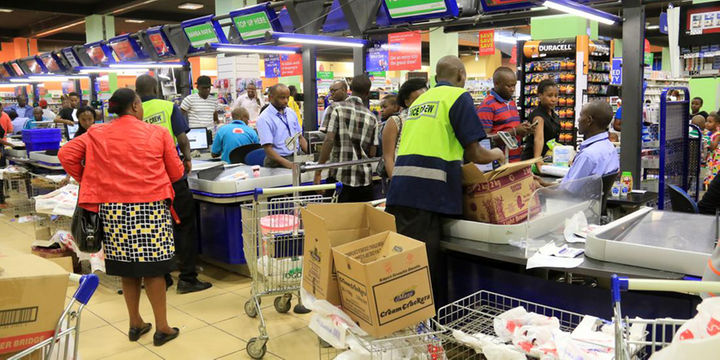Families across the country will have to adjust their budget or dig deeper into their pockets to afford Matatu fares and various food items because of a hike in prices.
The latest Kenya National Bureau of Statistics (KNBS) report has detailed a range in changes of the average retail prices of selected commodities over the period from August 2024 to September 2024.
Consumers have been feeling the pinch when it comes to basic food items, with several items showing notable price hikes.
However, the KNBS report indicated that Kenya’s headline inflation figure fell below the 4.0% in September 2024 closing the month at 3.6%.

This marked the first time it recorded the huge drop in 5 years.
“Overall year-on-year (annual) inflation rate as measured by the Consumer Price Index (CPI) was 3.6 per cent, in September 2024; a decrease from an inflation rate of 4.4 per cent recorded in August 2024.
“The month of September 2024 recorded a monthly inflation rate of 0.2 per cent.”
Also Read: Kenyan Shilling Falls Against Major Global Currencies
Matatu Fares and Items who Prices Increased
The price of oranges saw the highest increase of 5.2 percent.
Also, the price of potatoes, a key staple in many Kenyan homes, increased with 2.3 percent while the price of fresh fish increased by 2.1 percent.
Additionally, the cost of beef with bones went up by 0.9 percent, while the price of cabbages increased by 0.8 percept.
The price of maize grain, a popular food in Kenya recorded a 0.7 percent increase while the price of beans and onions went up by 0.6% and 0.5% respectively.
On the other hand, the cost of some non-food essentials increased including matatu fares from Nairobi CBD and its environs, which rose by 0.1 percent.
Moreover, the price of charcoal increased by 1.4 percent, while cooking gas (LPG) saw a rise of 0.7 percent.
Also Read: Cooking Oil, Gas and Rent Prices Hike as Inflation Drops
Items Whose Prices Dropped
However, the price of fresh packeted cow milk fell by 0.6 percent, while the price of wheat flour also saw a notable decrease of 2.1 percent.
In addition, the price of sugar dropped by 2.8 percent offering some relief to food prices.
On the other hand, some non-food essential items saw a decrease in cost including the price of electricity (200 Kilowatts) which decreased by 0.7 percent.
50-kilowatt usage of electricity reduced by 0.8 percent while the price of one litre of kerosene/paraffin decreased by 2.1 percent.
KNBS has explained that the annual inflation was mainly due to an increase in prices of commodities under the Classification of Individual Consumption by Purpose (COICOP) divisions.
Follow our WhatsApp Channel for real-time news updates!
https://whatsapp.com/channel/0029VaB3k54HltYFiQ1f2i2C




![Debate Rages Over Proposed Increase In Legal Drinking Age [Video] Nacada Raises Legal Drinking Age From 18 To 21]( https://thekenyatimescdn-ese7d3e7ghdnbfa9.z01.azurefd.net/prodimages/uploads/2025/07/beer-360x180.jpg)



































































![Debate Rages Over Proposed Increase In Legal Drinking Age [Video] Nacada Raises Legal Drinking Age From 18 To 21]( https://thekenyatimescdn-ese7d3e7ghdnbfa9.z01.azurefd.net/prodimages/uploads/2025/07/beer-120x86.jpg)